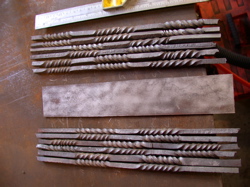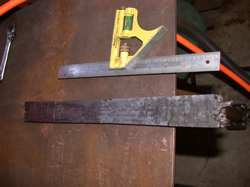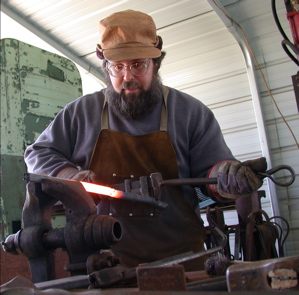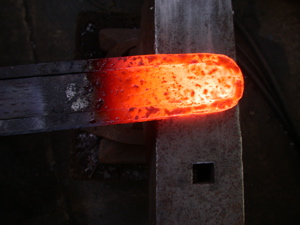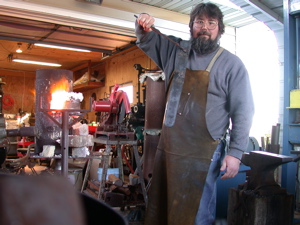Several years ago (well in the 60's really) a sword fragment was found in Bamburgh, UK and I learned about it a few years back. Some info on the 7th century find is simple to get with a web search for "Bamburgh Sword".
This is my take on the 12 bar that it may be.
Do keep in mind that the famed Sutton Hoo sword at the British Museum is but a mere eight bar (four on each side).
I do not know of another 12 bar out there made up by a modern smith..nor possibly and ancient one either for that matter.
Here are the six bars of wrought iron for one side and the six bars for the other layed out ready for cold assembly
That center flat sheet is for the core. The twist series is more complex than it appears.
Welded
Preparing the 20 layer twisted cutting edge from 15N20 and 1080
Cutting edge wrapped around the 12 bar core ready for welding
Welded
Me with the billet which will be forged out into a proper sword blade when I get a client interested in it.
